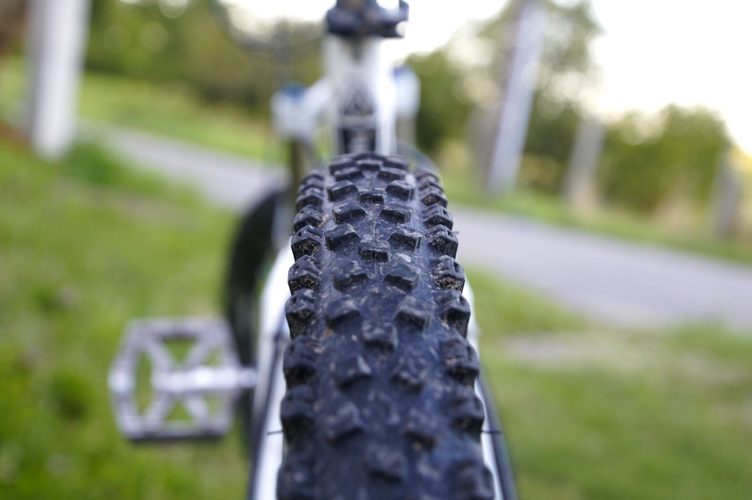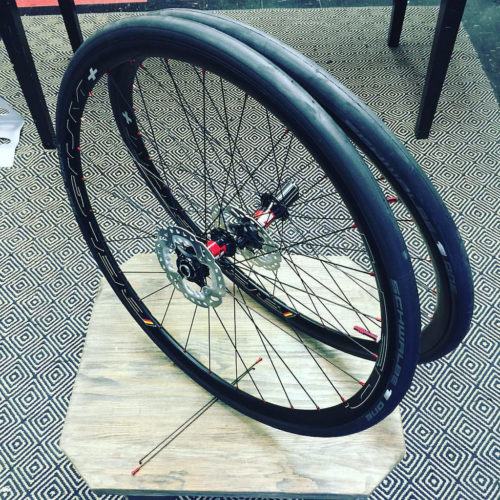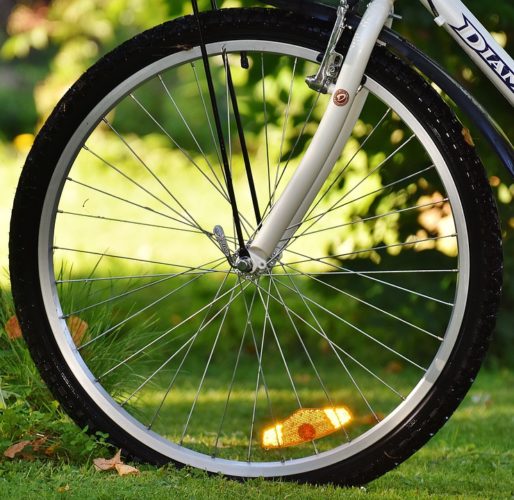
How to Choose the Best Road Bike Rims and Tires
As you travel down the road on your mountain bike, your tubular tires, rims, and tread will keep you moving. These bicycle wheels are designed to work quickly and move without being too rough on your body as you ride. They should handle bumps and shocks well and still stay responsive on any road you’re on—or even off-road wheels you are using.
 Still, you should watch for how the hybrid bike or mountain bike tires work as every option for your use is unique. You must know what to do when choosing the right rims and tires for a road bike. You need to look at tire width, tire size, puncture resistance, tread, and much more.
Still, you should watch for how the hybrid bike or mountain bike tires work as every option for your use is unique. You must know what to do when choosing the right rims and tires for a road bike. You need to look at tire width, tire size, puncture resistance, tread, and much more.
The tires and rim types are designed to provide a grip on the road. The rims will help support the tires and keep you moving. When paired together, they get you further down the road. To make it all work, however, you have to choose an option that fits well for your needs and isn’t too hard to use.
Check the Casing
You must look at the casing on your road bike tires and rims. The casing refers to how flexible the tire is and how it can keep from stretching too much. The casing helps to maintain the shape of a tire.
 Check on the threads per inch (or TPI) of the casing. When the TPI is higher, the casing is thinner. This offers a lighter weight but also a lower rolling resistance. Still, they are fragile and can be quickly damaged on rough roads.
Check on the threads per inch (or TPI) of the casing. When the TPI is higher, the casing is thinner. This offers a lighter weight but also a lower rolling resistance. Still, they are fragile and can be quickly damaged on rough roads.
Think about the types of roads your road bike will go on. You will need an option with a lower TPI if you plan on going on rougher surfaces that aren’t always even. A higher TPI is best for the flattest and most ordinary surfaces.
The density of the casing could add a slight bit of drag to your ride. This is due to ones that are denser often taking more power for you to propel forward. The added weight can be a hassle although it will result in a stronger setup.
Review the Threads
The threads on your tires help to handle moisture, small pebbles, and other things that your bike might get onto while riding. Check on how the threads and designed and make sure they’re strong. Rubber and butyl are great for most tires but nylon or Kevlar materials might be best if you’re riding on roads that might be tougher or riskier to handle.
 Some road bike tires don’t come with any threads. Such tires are best for flat surfaces that don’t have lots of small pebbles and other minimal materials you could run into. While these are simple and easy to maintain, you should be cautious when using them. You don’t want to use one of these in wet conditions where the weather is not cooperating.
Some road bike tires don’t come with any threads. Such tires are best for flat surfaces that don’t have lots of small pebbles and other minimal materials you could run into. While these are simple and easy to maintain, you should be cautious when using them. You don’t want to use one of these in wet conditions where the weather is not cooperating.
Should You Go Tubeless?
Your road bike tire can come in a tube-based or tubeless design. A typical rubber tube will keep the air in perfectly. You can find some tires that use butyl tubes that don’t lose air as fast as rubber does.
 Still, a tubeless tire might be intriguing if you want something that is a little easier to maintain. This does not require air but it does work with a special rim design that features a series of small connectors. These will latch to the body of your tire to keep its parts in place. This is attractive but the threads and rims can be at risk of wearing out quickly, especially with there being less space between the outside parts of the tires and the rims.
Still, a tubeless tire might be intriguing if you want something that is a little easier to maintain. This does not require air but it does work with a special rim design that features a series of small connectors. These will latch to the body of your tire to keep its parts in place. This is attractive but the threads and rims can be at risk of wearing out quickly, especially with there being less space between the outside parts of the tires and the rims.
Check the Size of the Rim
The rim should never be ignored when finding great parts for your road bike. You must choose a rim that has a great section that handles air and doesn’t cause a great deal of drag.
 For road purposes, a deep section rim is best. This offers a thicker design that keeps the spokes from being too long. Such rims will keep the wind from being too strong within your bike.
For road purposes, a deep section rim is best. This offers a thicker design that keeps the spokes from being too long. Such rims will keep the wind from being too strong within your bike.
A narrow rim option can also be used for your setup. This uses a very slim design around the ends and often works best for tubeless tires. It creates a lightweight setup but it must be used cautiously based on how deep it can get. Be aware of what you can use when making it work in any situation.
Look At the Spokes
Don’t forget to see how the spokes on the rims are designed. The spokes can be made with flat materials. These are designed to keep from sticking out too much from outside the wheel. Flat spokes cut through the wind quite well and keep the drag in check.
Round spokes might be better if you are adding lots of weight onto the bike. They are also great if you have plenty of uphill or downhill climbs on your road bike. Flatter spokes are best for flat surfaces.
Does the Rim Have To Be Wide?
You might think that a wider rim will do more to harm your ride. The truth is that a wider rim isn’t going to add more drag onto the ride than you think.
 If anything, a wider rim gives you a little more freedom and time for correcting your movements while on the road. You will have the power to keep the bike steady on the road and less likely to slip.
If anything, a wider rim gives you a little more freedom and time for correcting your movements while on the road. You will have the power to keep the bike steady on the road and less likely to slip.
This doesn’t mean that you should avoid using a thinner rim. This can be perfect for many riding needs although you’d have to be cautious while on the road. A thin rim could be slippery if you’re on a wet surface or any uneven spot.
Check carefully when finding a great tire and rim set for your road bike. Such a bike can get you around on the smoothest of roads with ease but you should still watch carefully for how whatever you use has. Look carefully at how a tire is made and how the rims work so you’ll have a choice that grips onto the road and handles aerodynamics with ease.





